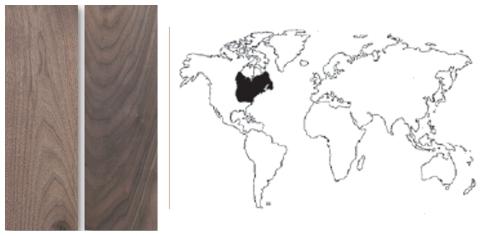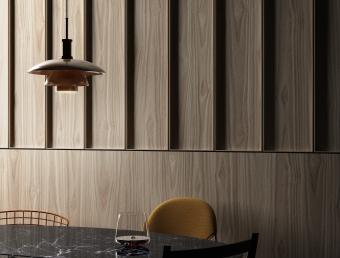American Black walnut
Scientific name:
Juglans nigra L.
Geographic origin:
United States and Canada.
- Sapwood: from yellowish white to light grey.
- Heartwood: from reddish grey to dark grey.
- Fiber: straight, occasionally wavy.
- Grain: medium size.

a
b
c
d
e
f
g
h
i
j
k
l
m
n
o
p
q
r
s
t
u
v
w
x
y
z
Capacity of being impregnated
- Sapwood: capable of being impregnated.
- Heartwood: low capacity to no capacity of being impregnated.
Mechanical properties
- Resistance to static flexion 1010 kg/cm2.
- Elasticity module 116,000 kg/cm2.
- Resistance to compression 523 kg/cm2.
Mechanization
- Sawing process: no difficulties.
- Drying process: slow. Risk of collapse and cementation.
- Planing process and other processes: no difficulties.
- Gluing process: easy.
- Nailing and screwing process: easy.
- Finish: easy
Physical properties
- Apparent density at 12% humidity 610 kg/m3 semi-heavy wood.
- Dimensional stability
- - Volumetric contraction coefficient 0.43 % stable wood.
- - Relation between contractions 1.42% no tendency to deformity.
- Hardness (Chaláis-Meudon) 3.6 semi-hardwood.
Observations
- Rellevant diferència de color entre la albura molt clara i el duramen fosc



